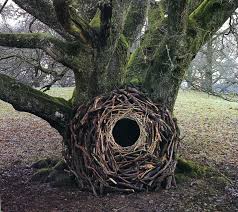What are we to do with our time, now that the closets are cleaned out, we’ve spoken by phone or email to our beloveds and assured ourselves they are okay (or not, in which case our angst is on the uptick), and we’ve gotten bored with cooking, watching M*A*S*H* reruns or the latest feel-good rom-com on our streaming services? What now?
Well, now life goes on, doesn’t it? In a very weird way. I cannot say I am used to the way things are, but I am adjusting, readjusting—and, sometimes, maladjusting. I continue to eat more sweets than I thought possible. I continue to take the walks I usually take every morning anyway, and I have, in fact, cleaned more than I have in years, including wiping down the baseboards.
What now? Now, my friends, is the time for ritual.
 |
| Preparations for a family ritual for a deceased member |
Yes, you heard me right. Ritual. I know, I know, what comes to mind is always a movie priest, holding the host aloft as he intones the words of the Eucharist. Let me be clear: I am not talking about religious ritual. I am talking about something that is not rote, not practiced, not memorized, and not imposed by an outside institution such as a church or sect of any kind.
I’m talking about meaningful personal ritual. Something we make up ourselves.
Humans are hard-wired for ritual. Early peoples made up rituals to invoke the sun to rise; contemporary peoples paint their faces, put on strange-looking clothes in particular colors, invent gestural dances and chants, and gather in large numbers in huge outdoor amphitheaters to watch another group of people play-fight on grass. Yes, I’m talking about football. You know it’s true. The rituals associated with the game—even if they involve little more than Doritos and spinach dip and sitting collectively in front of the moving-picture box—are deeply meaningful, bonding experiences for humans.
Humans also practice individual rituals. I don’t mean tooth-brushing at the same hour every morning. That’s a routine, or a habit, but not a ritual.
An individual ritual, to my way of thinking, may be a one-time event or a regular practice. It may be an invocation or performance. It may be solemn or silly, but it always has a sacred intention at its root. That sacred intention might be personal—such as a decision to quit smoking, or let go of a failed relationship, or express gratitude for a new beginning. The sacred intention could also be focused on another person’s well being, or the well being of the planet. Or it could be much simpler, arising from a powerful sense of beauty or sadness. The building of sandcastles at the beach—and watching them wash away—is that type a ritual, reflective of the deep human understanding of the impermanence of life.
 |
| My ever-deteriorating backyard Buddha |
A ritual might also spring from a place so deep within that we don’t truly understand it ourselves.
Some of our rituals of communion—religious and otherwise, such as hand-shaking—are missing right now. Many people have told me they feel an emptiness that can’t be entirely explained by not being in the physical presence of other people. Our routines are gone, certainly, but so are our rituals missing in action. We are all experiencing complicated feelings we can’t define, at least not right now.
Rituals help ground us in reality, which is odd, since they also bear a numinous quality. But we don’t have to understand them, and perhaps we shouldn’t always.
I am a very linear person, very grounded in reality. When I was attending seminary and we underwent healing ceremonies with native peoples, it seemed that everyone but me reported having amazing, dreamlike narrative visions of leaping jaguars and snakes spiraling around their bodies. I just felt relaxed and glad for a break from the didactics. Yet I love ritual and do it without thinking. I construct altars for people who have passed away. I regularly re-arrange a home shrine of photographs and beautiful personal objects of memory.
 |
| My altar for my dog, Jackson |
Which brings me to the other important thing about ritual. In addition to the sacred quality I mentioned, ritual requires symbolism. In order to speak to us on the deepest of unconscious levels—in order to speak to ourselves on that level—our rituals require objects and ideas that represent something more than what they are in a concrete sense.
A cairn is a beautiful stack of rocks, yes, but when we are on a hike and happen upon one someone has built, our response is always bigger than, “Oh, look, a neat pile of rocks.” We recognize the human emotion that was engaged in its creation. We may have no sense of what the maker was thinking or feeling, but we somehow comprehend the symbolism it bears. A rock is not just a rock when someone has placed it with others to form a cairn.
I have created elaborate performance rituals with others, complete with photographic records, and undertaken solemn and simple private ceremonies. I use ritual in my women’s groups and retreats. I am wont to arrange things in nature, rocks in shapes, sticks in piles, a very simple expression akin to the work of the artist Andy Goldsworthy. Many post-post-modern artists’ work includes ritual, either as performance or as a function of art that decays or changes on its own.
 |
| Work by Andy Goldsworthy |
There’s a reason for this, in this time: we need ritual to stay human, to survive.
I can’t tell you how to make your own ritual, and you don’t need me to tell you, anyway. You already know, in your own bones. Most people create ritual unconsciously; children are natural ritual-makers. Now is the time to make ritual, for yourself and/or with your family and friends (with proper social distancing, of course, and yes, you can make ritual by Zoom). Chant, sing, dance, make art, collect things, alone or together. Allow for the numinous to make itself known. Let whatever you do be and feel sacred. Let it move you, startle you, awaken you to something you haven’t yet discovered about yourself. Most of all, let it heal you.
May it be so!


